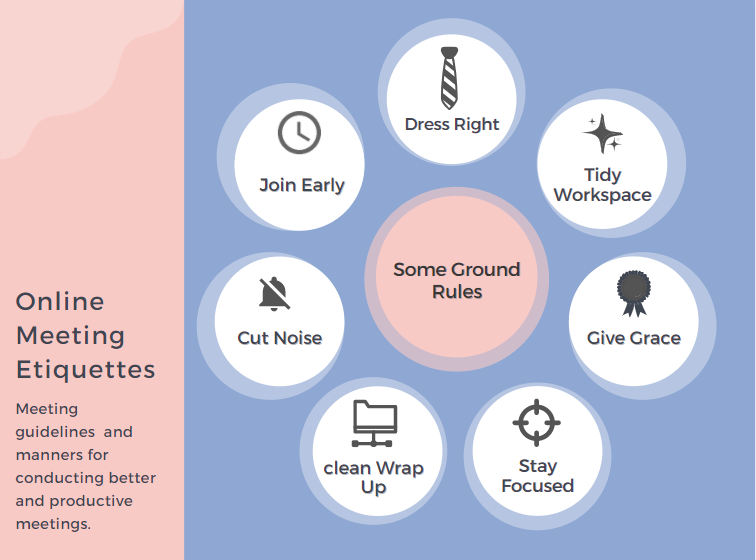where would an employee find an employers rules of etiquette?
- 10 rules of online etiquette
- The rules of etiquette in internet communications and postings are called
- What are the 7 rules of flag etiquette
Where would an employee find an employers rules of etiquette?
Have you ever worked with or hired someone, found that they did high-quality work and were very competent, but you really disliked working with them https://online-slots-empire.com/? Maybe you knew a teacher who was exceptionally knowledgeable but also unreliable, aloof, or critical. Perhaps you hired a personal trainer who created excellent routines for you but was frequently unavailable, did not communicate with you, or did not follow through on agreements. What was it like working with them? How did you describe these people to others? How have others described these kinds of professionals to you? Conversely, have you ever hired someone who fell short on their work but did their best to meet your needs? Perhaps someone lost your important paperwork but apologized and helped expedite a new set of forms. What about the therapist or physician who was unable to help you with your condition but made sure to connect you to someone who could?
To calculate the overall star rating and percentage breakdown by star, we don’t use a simple average. Instead, our system considers things like how recent a review is and if the reviewer bought the item on Amazon. It also analyzed reviews to verify trustworthiness.
Because it is difficult to define professionalism in an exhaustive way for every situation, some programs may not have venues for teaching it directly. Does your program give you a course in professional development? Are you referred to any books on the topic? Do you have structured mentoring in professionalism? Most of the time, your training in professionalism happens informally through your ongoing interactions with faculty who are willing to guide you through these unwritten rules. Each email reply, comment, and directive that you get from faculty are mini-lessons for the way to go about things as a professional.
10 rules of online etiquette
If you aren’t sure of the facts behind an online story or social media post, check with someone who does know or can find out. Another option is to search on Google or snopes.com to see if the post is true or if it is a scam.
If you aren’t sure of the facts behind an online story or social media post, check with someone who does know or can find out. Another option is to search on Google or snopes.com to see if the post is true or if it is a scam.
Make sure you are careful with what you share. It is always advisable not to share anything embarrassing, illegal or inappropriate. People you have not even met may look you up online. Make sure you set a good impression. Always ensure that what you write and share is understandable and grammatically correct. It makes it hard for others to read your work if it is not communicated properly. It generally helps to avoid swearing, but if you feel the need it may be an idea to use euphemisms or asterisks to filter it out; e.g. f***.
Following this netiquette guideline is even more important if you’re actively looking for a job online. If prospective employers find outdated information on your professional networking page, they might assume that you don’t care enough about getting work.
Just as in the physical world, a well-articulated message reflects positively on the sender. In the digital realm, proper grammar and spelling are your allies. Communication is smoother, and misunderstandings are minimized. We’ll delve into the importance of correct language and address common mistakes that can impact your online image.
“I think the most important rule for me is that as a parent, do not share your children’s pictures or private information online,” says Jennifer Zhu Scott, a technology executive and mom of two. Because of user agreements, even when you post to a private account on platforms such as Facebook or Instagram, that content is no longer yours, she says. Additionally, others can screenshot or download your pictures and posts without you knowing.
The rules of etiquette in internet communications and postings are called
If you aren’t sure of the facts behind an online story or social media post, check with someone who does know or can find out. Another option is to search on Google or snopes.com to see if the post is true or if it is a scam.
Mobile phone use can be an important matter of social discourtesy, such as phones ringing during funerals or weddings, in toilets, cinemas and theatres. Some book shops, libraries, bathrooms, cinemas, doctors’ offices and places of worship prohibit their use, so that other patrons will not be disturbed by conversations. Some facilities install signal-jamming equipment to prevent their use. Some new auditoriums have installed wire mesh in the walls to make a Faraday cage, which prevents signal penetration without violating signal jamming laws.
Although it can be fun to play along with social media posts that share your favorite color, first car, and the street you grew up on, these can be used by scammers to steal your identity and private information. Be discreet with any information that can be used as answers to security questions on your private accounts.
If you have an in-joke to share, send it in a private message. Additionally, don’t post an obscure comment to your Facebook, a forum, or an Instagram story, as this can leave others feeling as if they are excluded from whatever it is you are talking about.
What are the 7 rules of flag etiquette
The flag should not be displayed on days when the weather is inclement. The custom is to display the flag only from sunrise to sunset on flagstaffs in the open, but it may be displayed at night—if illuminated—to produce a patriotic effect. The flag should be displayed on all days, especially on:
(j) No part of the flag should ever be used as a costume or athletic uniform. However, a flag patch may be affixed to the uniform of military personnel, firemen, policemen, and members of patriotic organizations. The flag represents a living country and is itself considered a living thing. Therefore, the lapel flag pin being a replica, should be worn on the left lapel near the heart.
(1) the term ”half-staff” means the position of the flag when it is one-half the distance between the top and bottom of the staff;(2) the term ”executive or military department” means any agency listed under sections 101 and 102 of title 5, United States Code; and(3) the term ”Member of Congress” means a Senator, a Representative, a Delegate, or the Resident Commissioner from Puerto Rico; and(4) the term “first responder” means a “public safety officer” as defined in section 1204 of title I of the Omnibus Crime Control and Safe Streets Act of 1968 (34 U.S.C. 10284).
As a symbol of the country and its people, the flag should be treated with respect and be honored when on display. In order to treat the flag with the dignity it deserves, the following display guidelines are recommended.
(A) individuals in uniform should give the military salute at the first note of the anthem and maintain that position until the last note;(B) members of the Armed Forces and veterans who are present but not in uniform may render the military salute in the manner provided for individuals in uniform; and(C) all other persons present should face the flag and stand at attention with their right hand over the heart, and men not in uniform, if applicable, should remove their headdress with their right hand and hold it at the left shoulder, the hand being over the heart; and







